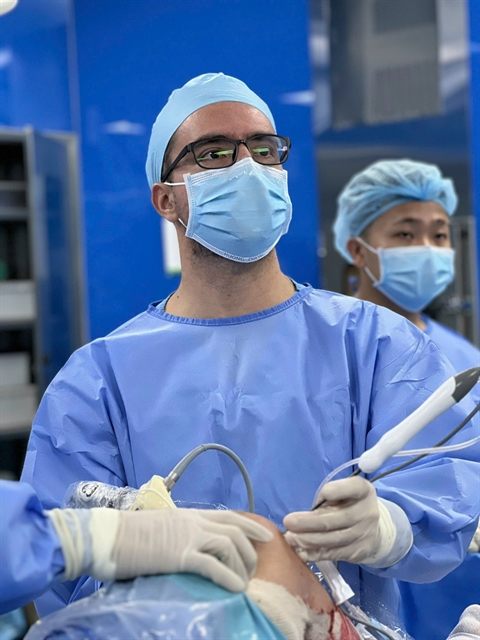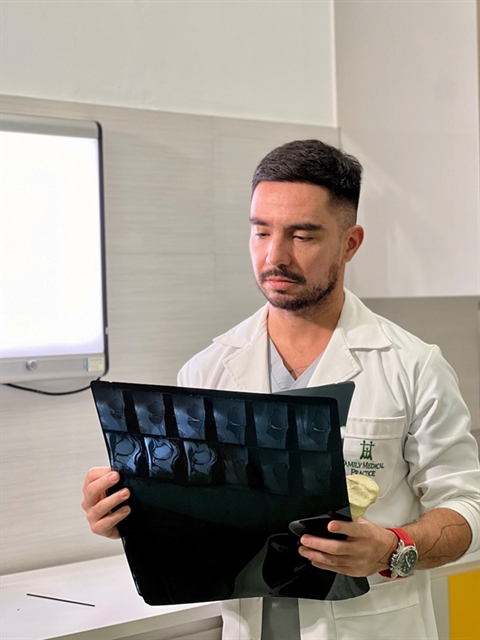Dr. Andres Sosa*
If you lead an active or demanding lifestyle, your knee health is paramount. One key to long-term knee function is preserving the meniscus, a crucial structure often overlooked until it’s injured.
What Is the meniscus and why is it vital?
The meniscus consists of two crescent-shaped pieces of cartilage in each knee: the medial (inner) and lateral (outer) menisci. These serve as shock absorbers, weight distributors and stabilisers for smooth knee movement.
• Anatomy: Positioned between the femur (thigh bone) and tibia (shin bone), the meniscus cushions the joint, preventing bone-on-bone contact.
• Function: It absorbs impact during walking, running, or jumping, protecting the knee’s cartilage from excessive wear.
• Biomechanics: By managing compressive and rotational forces, the meniscus reduces stress on the articular cartilage, minimizing the risk of osteoarthritis.

Modern techniques prioritise repairing, not removing, damaged tissue. Picture courtesy of Dr Sosa
How does meniscus damage lead to osteoarthritis?
Injuries to the meniscus – whether from trauma or overuse – compromise its protective role, leading to:
• Cartilage Damage: Increased stress accelerates wear and tear, paving the way for osteoarthritis.
• Biomechanical Instability: Tears disrupt knee alignment, creating abnormal movement patterns that worsen cartilage degradation.
• Accelerated Osteoarthritis: This degenerative condition causes pain, stiffness, and mobility loss, often necessitating knee replacement.
Why meniscus preservation matters
Preserving or repairing the meniscus can significantly reduce the risk of knee degeneration. Modern techniques prioritise repairing, not removing, damaged tissue.
• Pain Relief: Meniscus repair alleviates pain and restores function, letting you return to an active lifestyle.
• Cartilage Protection: By maintaining the meniscus, you shield cartilage from damage, reducing osteoarthritis risk.
• Knee Stability: A repaired meniscus restores proper movement, safeguarding the joint for long-term health.
A comprehensive approach to recovery
If you’ve experienced a meniscus injury, early intervention is critical. Advances in minimally invasive surgery and targeted rehabilitation ensure faster recovery and a full return to activity. Strengthening the muscles around your knee through physical therapy is equally important for injury prevention and function restoration.
Take action to protect your knees
Preserving your meniscus is an investment in your mobility, enabling you to stay active and pain-free for years to come. Family Medical Practice

Dr. Andres Sosa. Photo courtesy of Family Medical Practice
*Dr. Andres Sosa, an expert in orthopeadic surgery and sports medicine, specialises in advanced meniscus repair techniques. With training in Italy, the US, Spain, and Singapore, he brings world-class expertise to Hà Nội, offering personalised care for active individuals and professionals.
FMP Healthcare Group operates medical centres in major cities including HCMC, Hà Nội, and Đà Nẵng, offering consultations with international doctors, check-up centres, and emergency ambulance services.
Visit FMP Hanoi 24/7 at 298I P. Kim Mã, Kim Mã Ward, Ba Đình Dist.
To book an appointment, please call us at (024).3843.0784, or contact us via Whatsapp, Viber or Zalo on +84.944.43.1919 or email hanoi@vietnammedicalpractice.com.
OVietnam